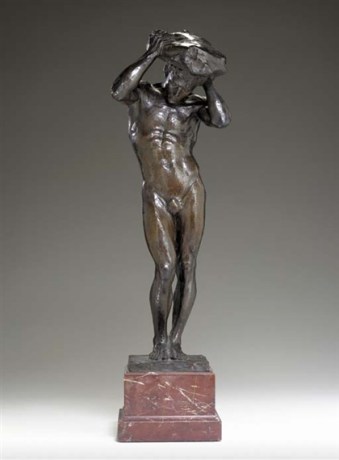Gertrude Vanderbilt Whitney is best remembered today for the massive monumnets that she designed, such as the “Monument to Discovery Faith” in Spain and the Titanic Memorial in Washington, D.C.
But the artist also created hundreds of smaller pieces, some of which will be on display in Port Washington.
“Intimate Works from Her Studio” are currently on display at the Stam Gallery, located at 289 Main St. in Port Washington. The pieces are up for sale but are available for public view Wednesday through Sunday from 11 a.m. to 5:30 p.m. until July 15.
Whitney, born in New York City in 1875, was the second daughter of Cornelius Vanderbilt II. She was inspired to pursue the arts after visiting France with her family as a young woman. But she faced an uphill climb to being taken seriously as an artist.
Her great-grandson said, she had two flaws: she was born very rich, and she was born a woman,” said Steven Stam, who runs the gallery and has appraised fine art for over 40 years. “Every wealthy or upper-middle-class woman became an artist, often working with watercolors, and the art critics of the world had little regard for them.”
Neither her family nor her husband Harry Payne Whitney supported her decision to pursue sculpting as a career.
When she first started her art career, she worked under an assumed name, believing that her work would not be taken seriously otherwise. During this time she created smaller sculptures, many of them nude, which her mother found to be scandalous.
Her first commissioned piece was for the Pan-American Exposition in 1901; by 1910, she began to work under her real name.
After donating her time and money running a hospital in France during World War I, she began receiving commissions to create public sculptures.
Many of the sculptures are still displayed today in Canada, France, Spain, and the United States, particularly New York City.
Some of the sculptures on display at the Stam Gallery served as models for these larger projects.
“There is a wonderful sculpture of a man holding a rock on top of his head, carrying something,” Stam said. “That is the basis that was used to create [“The Three Graces”] fountain at McGill University in Montreal.”
The statues on display are plaster, as this was her preferred medium to work with Stam said.
“She had assistants who would do the wire work, and then she would handwork the plaster,” he said. “She would use her fingers to work out the shapes and we have images of it in our studio.”
Although most of her work is on the smaller side, there are pieces on display over seven feet in height, Stam said.
In addition to her own hard-won acclaim, Whitney used her wealth to support other artists, especially women. When the Metropolitan Museum of Art rejected her donation of American art, she established her own museum.
“She was a big supporter of American artists, those her were not of the European style,” Stam said.

